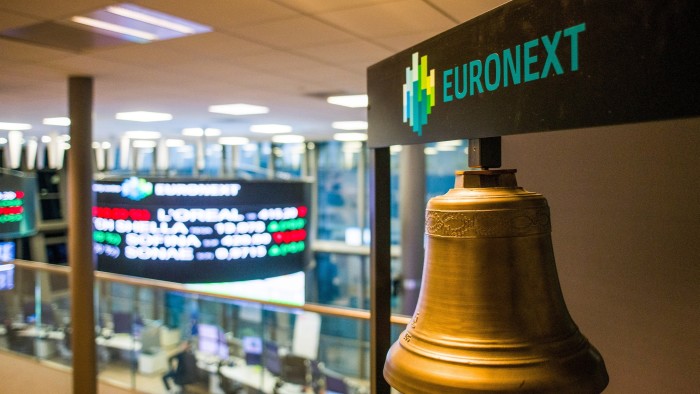Stay informed with free updates
Simply sign up to the Exchange traded funds myFT Digest — delivered directly to your inbox.
The European market regulator’s recommendation that the EU move to one-day trade settlement (T+1) in October 2027 would remove a costly burden from the exchange traded fund industry, market participants say.
Fund managers issuing European-listed US equity ETFs are currently grappling with a mismatch. When demand for their ETFs rise, they need to buy the underlying constituents, which settle in T+1, on the following day, but have to wait another day to receive payment, due to Europe’s current T+2 model. This also applies to many other overseas-listed stocks.
The US moved from two-day settlement to one day in May this year.
The rise in costs has been hard to quantify, involving elements such as the cost of hiring additional staff to deal with settlement, automation of systems and the cost of funding trades.
James Maxfield, chief product officer at Duco, which provides artificial intelligence-powered data solutions to the financial industry, said custodians and banks had added a lot of people to their operations to smooth the transition to T+1.
“This is not sustainable in the long term. It puts your costs up,” Maxfield said.
The impact on ETFs has included them trading at premiums to the value of their underlying constituents and a reluctance to trade on Thursdays when participants would face greater costs of funding.
“My biggest frustration, post the US move to T+1, is that the market dynamic that we’re left with is a suboptimal market structure,’ said Jim Goldie, Emea head of capital markets for ETFs and indexed strategies at Invesco, adding that the day of the week could determine trading decisions based on premiums and volumes.
“When we are once more aligned globally these dynamics cease to exist,” he said.
Ben O’Dwyer, ETF market structure and capital markets specialist at State Street Global Advisors, said it had seen a marked change in investor behaviour on Thursdays.
“We now see about 19 per cent of volumes being traded on a Thursday for US and global exposures, down from 23 per cent pre-transition. We have also seen the share of volumes traded on Monday-Wednesday increase from 59 per cent to 63 per cent,” he told the FT in October.
Goldie also pointed to ETFs tracking US benchmarks trading at a premium relative to the fair value of their baskets.
“Excluding Thursday this is one day’s funding so [the premium] tends to be in the region of 1-2 basis points, but on a Thursday it can be closer to 4-5bps,” Goldie said.
Trading spreads have been little affected, both Goldie and O’Dwyer agreed, though O’Dwyer added that there was a slight amplification from the widening of 0.3 bps, compared to pre-transition, for on-exchange ETFs that track US or global equity indices to 0.5 bps on Thursdays.
Monday’s recommendation from the European Securities and Markets Authority, that the EU move to T+1 on October 11 2027 means that, if adopted by both jurisdictions, the EU would be aligned with recommendations from the UK accelerated trade task force, which has also set a desired deadline of Q4 2027 for a move to T+1.
The proposed harmonisation would remove a further concern from ETF market participants who feared that the UK might decide to move to T+1 before the EU did, resulting in ETFs listed on the London stock exchange and its European counterparts having different settlement times.
The prospect of such a misalignment had even prompted the UK task force on accelerated trade settlement to propose that ETFs trading in London be exempted from moving to T+1.
“As an industry we’ve been advocating for a harmonised move by the UK and the EU,” said Goldie.
Read the full article here

